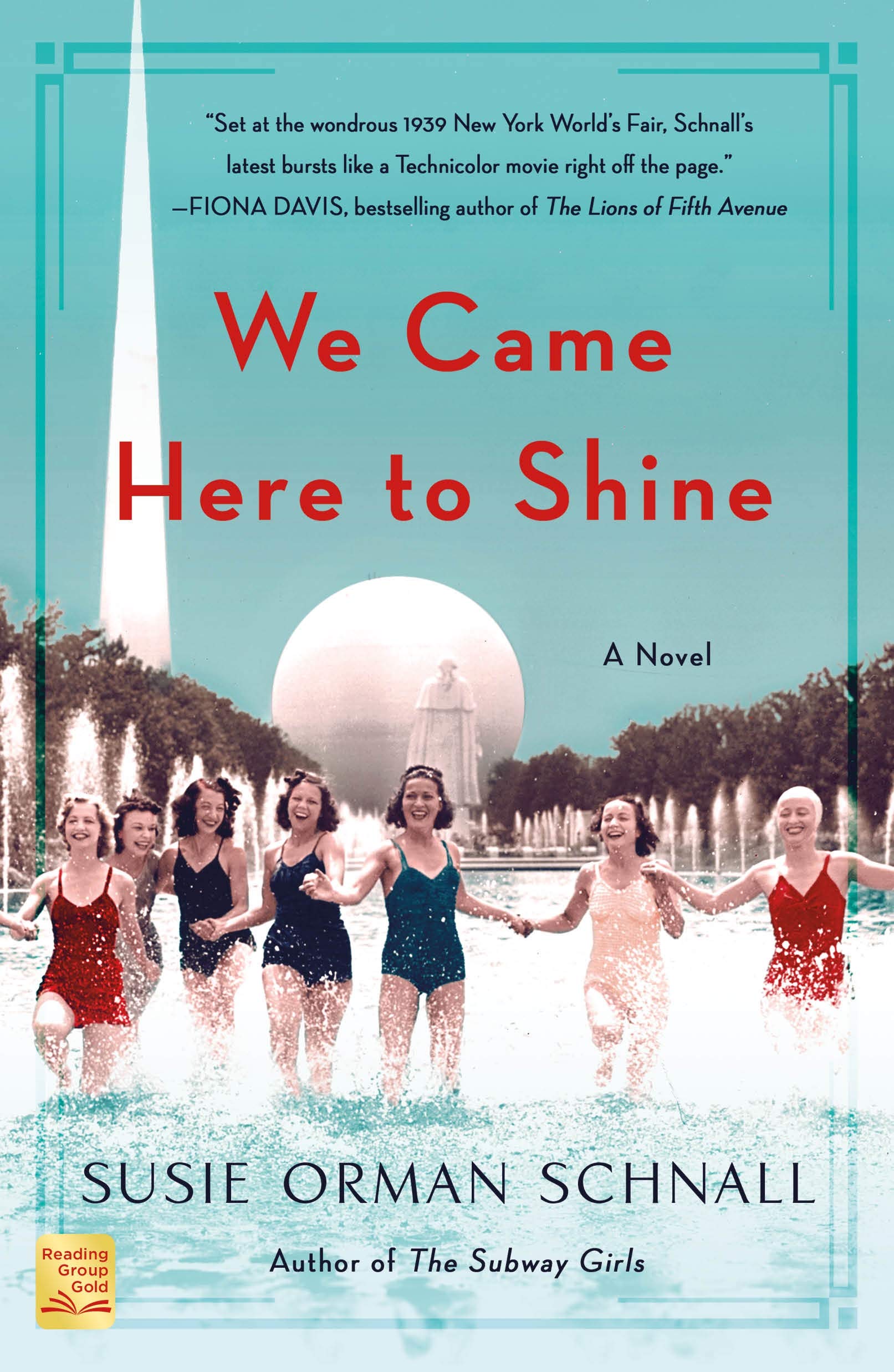
Nostalgia for the 1939 World’s Fair
Neither Maxine Roth nor Vivi Holden wanted to be sent to World’s Fair in the spring of 1939; Max was angling for a journalism internship at the New York Times and Vivi was excited by a starring role—her first—in the Hollywood film Every Last Sunset. But both young women do end up at the fair. What they learn—about themselves, the nature of friendship and indeed life—are the basis for the novel We Came Here to Shine (St. Martin’s, $16.99). Fiction Editor Yona Zeldis McDonough chats with author Susie Orman Schnall about her entertaining new summer read—think of it as a perfect respite from the horror of the daily news.
Yona Zeldis McDonough: What sparked your interest in the 1939 World’s Fair and why do you think it’s still relevant today?
Susie Orman Schnall: The idea for the novel came to me when I was reading Esther Williams’ autobiography. She writes about her experience in Billy Rose’s Aquacade at the 1940 Golden Gate Exposition, which was the World’s Fair in San Francisco. I had never heard of an Aquacade, so I looked it up and learned that it was a synchronized swimming spectacular and the highest-grossing attraction at the 1939 New York World’s Fair. My interest was piqued and I decided that the Aquacade and the 1939 Fair specifically — taking place in NYC between the ending of the Depression and the beginning of WWII — would make an interesting topic for a historical novel. I think it’s relevant for the nostalgia, the history, the remarkable innovations presented at that fair. It was a time of great hope for the future for our country and also the realization of the frailty of our global systems. While doing talks about the book and the history of the fair, I find that readers are fascinated by what went on at the fair, the massiveness of its physical footprint, the involvement of so many governments and companies, the technological innovations introduced (television, nylons, the dishwasher). It has a certain sense of charm and can be romanticized. But when you look a little more deeply the seriousness of the time is quite clear.
YZM: Maxine Roth is a feisty Jewish girl who’s ahead of her time—she’s ambitious, smart and not content with being professionally sidelined by her male bosses; who inspired her?
SOS: She was inspired by all the women I learned about while researching the book. There were, of course, low expectations for women to become educated professionals but that didn’t mean that women’s ambitions were completely squelched. There were plenty of women who dreamed big and I wanted to celebrate them. I’m not so sure she was ahead of her time in her desires, but she was less able to rein herself in than other women who certainly wanted what she wanted but chose instead (for a variety of reasons) to conform to the structures society built for them.
YZM: Let’s talk about National Woman’s Party member Elizabeth Dorchester—was she a real character and if so, did she actually speak at the fair? If not, who is she modeled after? What was your purpose in including her?
SOS: Elizabeth Dorchester is not a real person but she was based upon the women who were part of the National Woman’s Party which was formed in 1916. Its main purpose at that time was to advocate for women’s suffrage but it evolved throughout the years after the 19th Amendment was passed and turned toward fighting for the Equal Rights Amendment. I also read through many of Eleanor Roosevelt’s speeches at the time to help shape the speeches of Elizabeth Dorchester in the novel. I included her to give a framework and a context for some of the issues that Max and Vivi bond over and feel strongly about as they try to make their way in a male-dominated society that they feel is unfair and inhospitable to their ambitions.
YZM: Although both Max and her new friend Vivi both have love interests, you’ve chosen not to make that the focus of their stories—can you elaborate?
SOS: This is a woman’s story. I wanted to include their love lives to some degree because that is certainly part of a woman’s life. But I didn’t want it to be the whole story or even the main focus. Vivi and Max are “enough” in their own stories and I wanted to emphasize that. I didn’t want them to be defined by the men who they love. There were too many other men in their lives trying to tell them who to be and how to act.



